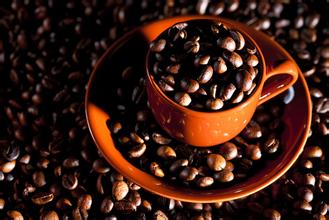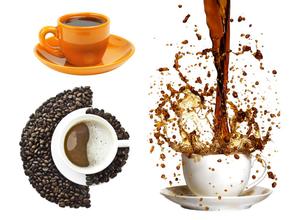Introduction to the flavor description of coffee bean varieties and grinding-grinding relationship in the region
Introduction to the flavor description of coffee bean varieties and grinding-grinding relationship in the region
Once the coffee beans are ground too fine and the water comes into contact with the surface of the coffee powder too much, too many unnecessary impurities will be extracted, even bitter beans will come out; but if the coffee is ground too thick, the delicacy will still be hidden deep inside, where the hot water can not be touched. The coffee brewed does not have enough aroma.
When brewing Italian espresso, we must make efforts to fill the coffee powder to make it resistant to high-pressure hot water in order to really extract the essence of coffee. Therefore, it is more sensitive to the degree of grinding, the more uniform grinding, the more compact the coffee powder, and less space, can produce balanced resistance to water, so that a cup of Espresso can be extracted successfully.
Humidity factors play a role not only in sunny and rainy days, but also at different times of the day. Generally speaking, the humidity in the morning and evening is higher than that at noon, so according to the influence of humidity factors, the grinding degree should be thickened in the morning and evening, and finer at noon.
There are many other factors that affect the degree of grinding, including the roasting degree of coffee beans (although coffee beans used by Espresso should use a deeper roasting degree, but sometimes different roasting degrees may be used to roast formula beans for richer taste), blended recipes, and so on. All of the above are the most common and can be mastered by baristas. The previous sections are all about the adjustment of the basic factors in the production process in order to meet that taste standard on the premise of understanding the good taste of Espresso (see the taste of Espresso). There are many things about the world of Espresso that we don't fully understand, and we would like to explore with you the coarse graininess of this wonderful world of coffee: about the size of planed sawdust, flaky particles, suitable for filter pots, or in tea bags, placed in pots and brewed with hot water.
Medium granularity: about the size of coarse sugar, suitable for hand filter cup and hand filter cloth. Medium fineness: about the size of No. 2 sugar, suitable for electric coffee maker, siphon and mocha pot.
Fine granularity: about the size of quicksand on the beach, suitable for Italian coffee maker and water drop iced coffee. Finest granularity: about the size of too white powder, suitable for use in Turkish pots.

Important Notice :
前街咖啡 FrontStreet Coffee has moved to new addredd:
FrontStreet Coffee Address: 315,Donghua East Road,GuangZhou
Tel:020 38364473
- Prev

Description of the taste and flavor of Robska coffee beans
Introduction of Robska Coffee beans taste and flavor description Arabica coffee raw beans and Robusta coffee raw beans are quite different from each other. Arabica is longer, flatter, more complete and greener; Robusta is more round, thicker and whiter. These two varieties of coffee trees need plenty of sunlight and water. Arabica coffee trees like 1520.
- Next

Tropical Rain Forest Mark Coffee beans-Rainforest Alliance certified coffee beans
Tropical Rain Forest Mark Coffee Bean-Rainforest Alliance (RA) was established in 1987, headquartered in New York, USA. It is not only a non-profit international non-governmental environmental protection organization, but also the largest and most authoritative professional FSC certification organization recognized by the international forest certification system FSC. Its mission is to protect by changing land use patterns, business and consumer behavior.
Related
- Guji coffee producing area of Guji, Ethiopia: Humbela, Shakiso, Wulaga
- What is the most expensive variety of Qiloso in BOP multi-variety group?
- How to store the coffee beans bought home?
- Why are Yemeni coffee beans so rare now?
- Ethiopian Sidamo all Red Fruit Sun Sun Santa Vini Coffee beans
- SOE is mostly sour? What does it mean? Is it a single bean? what's the difference between it and Italian blending?
- Is Italian coffee beans suitable for making hand-brewed coffee?
- How to choose coffee beans when making cold coffee? What kind of coffee beans are suitable for making cold coffee?
- Just entered the pit to make coffee, what kind of coffee beans should be chosen?
- Can only Japan buy real Blue Mountain Coffee? What are authentic Jamaican Blue Mountain coffee beans?

